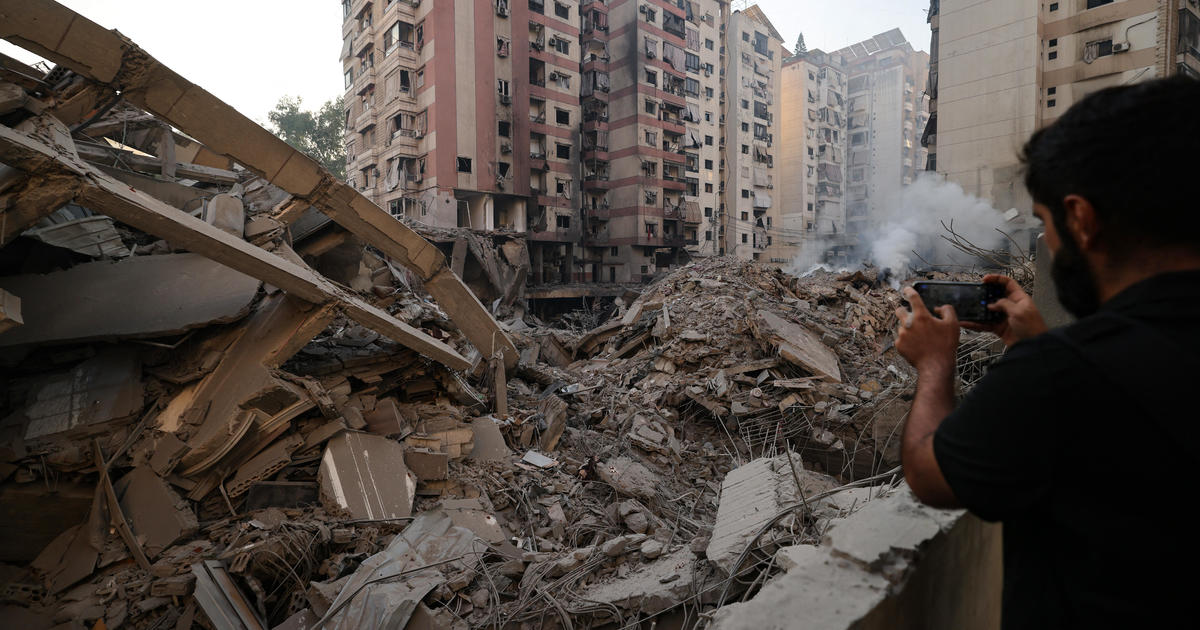The escalating conflict between Israel and Lebanon, fueled by Hezbollah’s involvement and Hamas’s October 7th attack on Israel, has resulted in devastating consequences for the civilian population. Intense Israeli bombardment across Lebanon, including strikes on Beirut’s southern suburbs and even Palestinian refugee camps, has led to a mass exodus of people fleeing the violence. Simultaneously, Hezbollah’s retaliatory rocket attacks on Israel further intensify the conflict’s destructive cycle. This situation demands a comprehensive understanding of the unfolding events, their impact, and the implications for regional stability.
Devastating Impact of the Israeli Bombardment on Lebanon
Civilian Casualties and Displacement
The Israeli military operation in Lebanon has inflicted immense suffering on the civilian population. Thousands of Lebanese citizens, including Palestinian refugees, have been forced to flee their homes due to the intense bombardment of various areas, including Beirut’s densely populated southern suburbs, a Hezbollah stronghold. Reports from hospitals indicate numerous casualties, both among medical staff and civilians, directly impacting essential healthcare services during this emergency. The indiscriminate nature of some attacks has raised serious concerns about violations of international humanitarian law. The World Health Organization’s reports further emphasize the alarming scale of this humanitarian crisis, documenting casualties amongst healthcare workers that greatly compromise an already fragile healthcare infrastructure. The destruction of infrastructure including hospitals and other civilian buildings, further worsens the situation.
Targeting of Hezbollah and Infrastructure
Israel’s military has justified its actions by claiming that it is targeting Hezbollah’s military infrastructure. However, reports from the ground and independent sources suggest the attacks are impacting hospitals, schools, and other essential services. These reports frequently include claims of attacks on buildings previously used by Hezbollah media outlets as well as locations in which Hezbollah fighters have gathered or trained. However, civilian infrastructure surrounding military infrastructure is often destroyed during these strikes as well. Even locations such as mosques adjacent to hospitals, where the IDF alleged Hezbollah fighters had gathered, have suffered devastating damage. This has led to significant criticism of the proportionality and targeting methods used by Israel. The widespread destruction of both infrastructure and residences greatly worsens already difficult living conditions throughout the country. The long-term effect this destruction will have on Lebonese citizens is significant and potentially permanent.
Hezbollah’s Response and Regional Dynamics
Rocket Attacks on Israel
In response to the Israeli offensive, Hezbollah has launched numerous rocket attacks on Israeli territory. Although most rockets are intercepted by Israeli defense systems, they still cause disruption, fear, and potential damage. The scale of rocket fire reported shows that Hezbollah is continuing to respond against Israel’s offensive military actions throughout Lebanon. The increase of tension between Israel and Lebanon increases as the intensity of both offensives continues to rise. These cross border offensives continue the dangerous and increasingly precarious situation throughout the area. The continued increase in fighting raises fears of broader conflict.
Regional Implications and International Involvement
The conflict in Lebanon has broader regional implications, given Hezbollah’s connections with Iran and its role within the region. The intensity and the continued exchange of strikes across the border is likely to impact nearby countries and create regional instability. International bodies such as the UN and numerous countries around the world have been monitoring the situation and have appealed for restraint, and efforts are being made by multiple governments and organizations to aid those impacted. The humanitarian disaster across the border has led to many countries deploying military resources to evacuate their citizens from Lebanon. Efforts such as these continue across the border in order to attempt to de-escalate the crisis. However, differing diplomatic strategies and conflicting responses amongst international bodies shows the challenges of mitigating the current conflict and avoiding further international escalations.
The Humanitarian Crisis and International Response
Evacuation Efforts and Humanitarian Aid
The massive displacement of the population due to ongoing conflict created an immediate humanitarian crisis. Multiple nations have begun evacuation efforts and aid distributions as the situation remains dangerous and the numbers of people affected rise. As reported, hundreds of citizens from multiple countries, including the US, Germany and the Netherlands, have already been evacuated, alongside thousands of refugees escaping into surrounding areas. However, logistical challenges hinder swift and widespread deployment of aid as more people are forcibly removed from their homes.
Calls for a Ceasefire and Political Solutions
International communities continue to appeal for immediate ceasefires and the need for political solutions and mediation in the conflict. However, political will to end conflict appears low given the heightened rhetoric of government officials on both sides and lack of consistent calls for de-escalation. The current humanitarian disaster only adds to the immediate necessity for de-escalation across the region. Diplomatic efforts to engage parties involved and find acceptable compromises have largely failed and more concerted political involvement and cooperation will be required for meaningful resolution of this humanitarian crisis and avoiding further potential escalations across the region.
The Long-Term Implications
The Israeli-Hezbollah conflict extends beyond immediate concerns. The devastating physical and psychological effects upon civilian populations in Lebanon will last for decades. Furthermore, the instability will further hamper a fragile Lebanese economy already damaged by previous conflicts and crises. Furthermore, this war carries potential to ignite more conflict with countries and regional actors involved or impacted by the ongoing crisis in Gaza. The war also affects the safety of citizens across several countries.
Takeaway Points:
- The ongoing conflict in Lebanon is causing widespread death and displacement among Lebanese citizens and refugees.
- The targeting of civilian infrastructure and the high number of civilian casualties raise serious concerns about potential violations of international humanitarian law.
- Hezbollah’s retaliatory actions against Israeli military forces have further complicated the situation and escalated conflict.
- The international community must take urgent action to ensure humanitarian access and de-escalate the violence, supporting efforts towards a peaceful resolution. Long-term implications including the rebuilding of Lebanon’s economy and the stabilization of its political environment need to be addressed.









